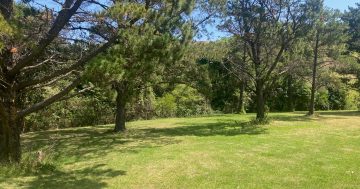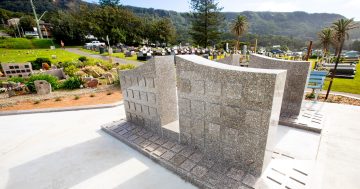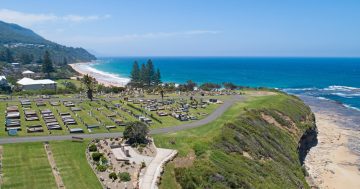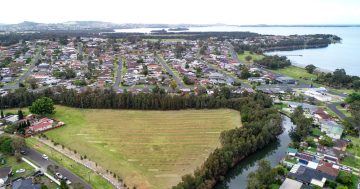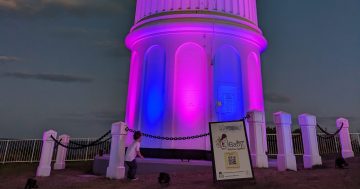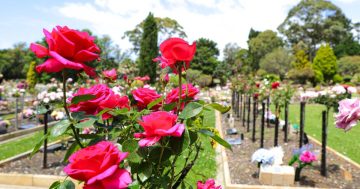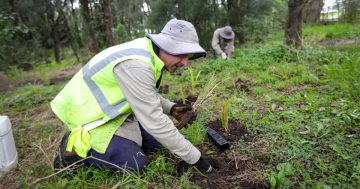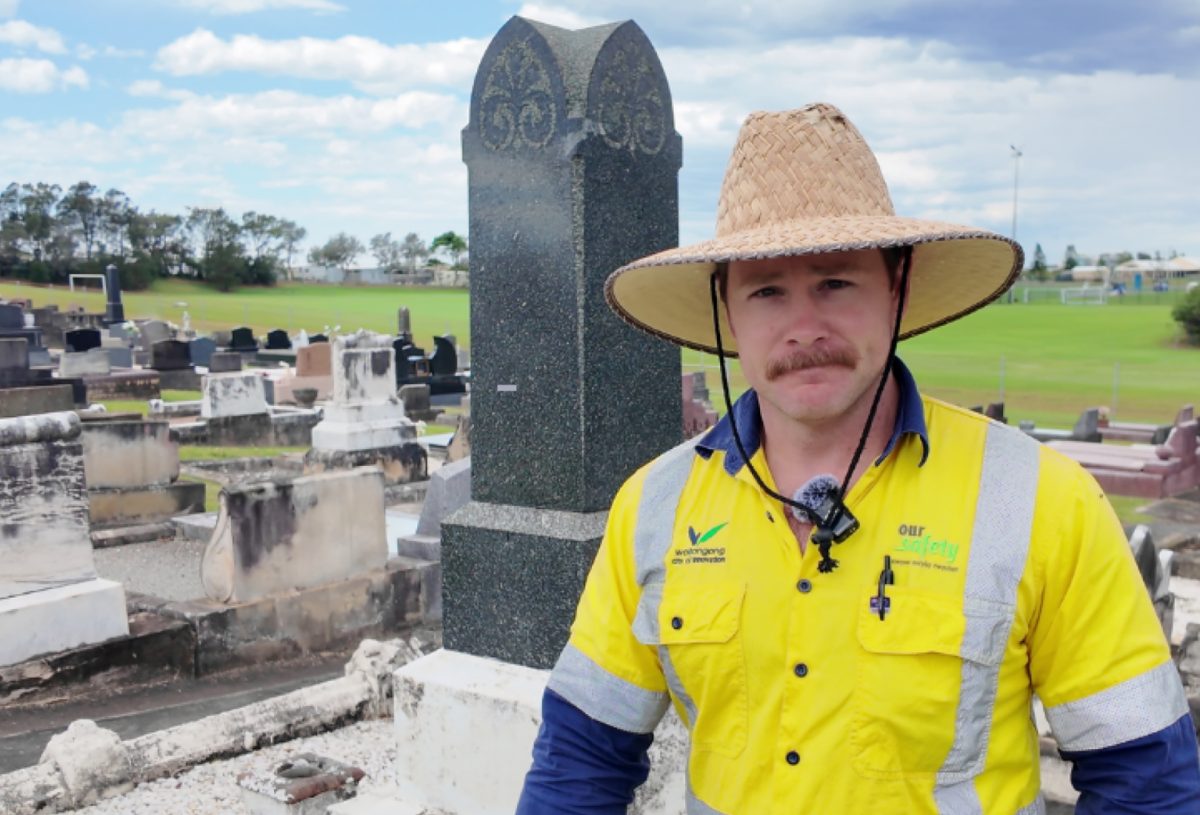
Josh Saunders is part of the council team checking headstones and monuments at Wollongong cemeteries. Photo: Wollongong City Council.
It’s not every day a headstone undergoes a health check, but at Wollongong cemeteries, 28,500 cherished monuments are being given a firm nudge to ensure they stand tall — and stay safe — for generations to come.
As part of a commitment to keeping memorials safe, Wollongong City Council’s cemeteries and memorial gardens team is undertaking the mammoth task of testing for structural stability and safety on all headstones and monuments in its 10 cemeteries and memorial gardens.
It follows a legislative requirement under the Cemeteries and Crematoria NSW (CCNSW) Interment Industry Scheme, which sets safety and maintenance standards for NSW cemetery operators.
Josh Saunders, from council’s cemeteries and memorial gardens team, said the changes were brought about by cases around the world where people were sadly hurt and even killed by loose memorials.
In a video on council’s Facebook page, Josh walks through a typical monument being targeted, which had suffered severe erosion and degradation.
“The safety issues with loose memorials is that they can be so loose they will fall and injure someone,” he said.
“While burials built today adhere to Australian safety standards, many older gravesites did not and risk causing injury or death to people who come into contact with these unstable monuments.”
According to the legislation, safety inspections must be carried out at least once every five years, and proportionate action must be taken to minimise potential safety hazards.
During the video, Josh shows how the crew rolls out a simple but important hands-on test — giving each headstone a push with the palm of the hand to make sure it’s as solid as the memories it represents.
“After a headstone or monument is identified as a risk, a staff member applies a firm amount of force to the structure,” he said.
“If there is any movement or degradation visible, that headstone is safely laid face down to protect inscriptions from weather and erosion.”
Already, a number of memorials have been found to be non-compliant to the current Australian standards.
Many of these were constructed between 1940 and 1960 and featured headstones not connected to the base, but rather sitting on top.
“While it is our role to care for the grounds and ensure public safety, we will not interfere with headstones beyond necessary requirements,” he said.
“When we are able, families of affected monuments will be contacted for further action and care.”
Josh said the task at hand was a significant one for council staff.
“Carrying out these inspections across 10 sites is an ongoing process that will take a significant amount of time,” he said.
“Our team will take utmost care and respect in every part of this process.”
For more information, guidance on renovation or repair work, or to update contact details for existing sites, contact the Memorial Gardens Office on 4227 7780.









